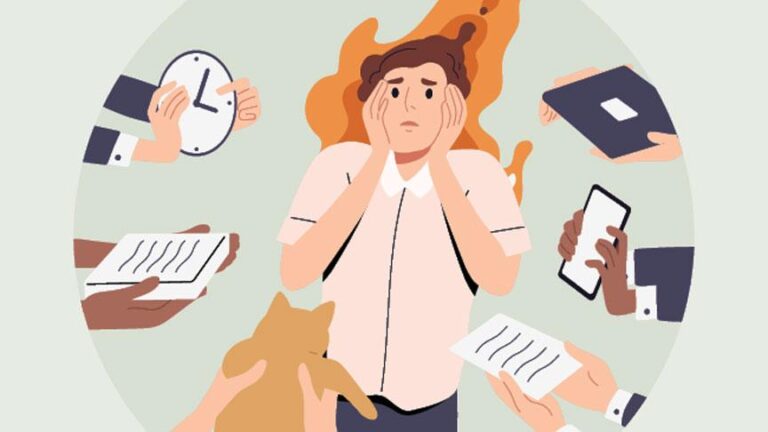Burnout is more than just feeling tired after a long week—it’s a state of chronic physical and emotional exhaustion that can seriously impact your well-being and productivity. Recognizing the early signs of burnout is crucial for taking timely action before stress spirals out of control. In this article, we’ll explore how to spot burnout in its initial stages and provide practical strategies to help you regain balance, boost your resilience, and maintain your passion for work and life. Whether you’re an employee, manager, or entrepreneur, understanding burnout can empower you to create healthier habits and a more sustainable approach to your daily challenges.
Table of Contents
- Recognizing the subtle Signs of Burnout before It Escalates
- Understanding the Psychological and Physical Impact of Burnout
- Practical Strategies for Early Intervention and Stress Management
- Building a Sustainable Routine to Prevent Future Burnout
- Final Thoughts
Recognizing the Subtle signs of Burnout Before It Escalates
Burnout frequently enough starts with subtle shifts in your daily routine and mindset that can easily be overlooked. You might notice a recurring sense of fatigue that isn’t relieved by rest, a creeping irritability over minor inconveniences, or decreased enthusiasm for tasks that previously brought joy. These early signals are your body’s way of signaling that stress is becoming chronic. It’s essential to tune in to these changes rather than push through them, as ignoring these warning signs can exacerbate the issue substantially.
Pay close attention to patterns such as:
- Declining productivity despite putting in long hours
- Memory lapses or difficulty concentrating on routine tasks
- emotional numbness or feeling detached from your work and colleagues
- Increased cynicism or negative thinking about your role
Identifying these signals early empowers you to adopt effective coping mechanisms before burnout fully takes hold. Whether through setting boundaries, seeking professional support, or incorporating restorative activities into your day, proactive steps can significantly alleviate the pressure and restore your well-being.
Understanding the Psychological and Physical Impact of Burnout
Burnout is more than just feeling tired after a long week; it represents a profound state of emotional, mental, and physical exhaustion caused by prolonged stress. Psychologically, individuals may experience a persistent sense of cynicism, detachment, and a diminished sense of accomplishment. these emotional symptoms often manifest as irritability, anxiety, and depressive moods, which can interfere dramatically with daily functioning and relationships.Recognizing these signs early is crucial because they often signal deeper disruptions in cognitive processes like attention, memory, and decision-making, further exacerbating feelings of helplessness and frustration.
Physically, burnout can trigger a cascade of health issues, including chronic fatigue, headaches, and sleep disturbances. People might also notice muscle tension or gastrointestinal problems that don’t respond well to typical treatments. The body’s stress response becomes dysregulated, leading to weakened immune function and increased vulnerability to illness. When burnout persists, it can contribute to more serious conditions like hypertension or cardiovascular disease. Key warning signs to watch for include:
- Persistent feelings of exhaustion even after rest
- Frequent headaches or unexplained aches and pains
- Sleep problems such as insomnia or restless nights
- Reduced ability to concentrate or complete routine tasks
- Emotional numbness or a growing sense of detachment
Practical Strategies for Early Intervention and Stress Management
Recognizing the early signs of burnout is essential for taking swift action before stress becomes overwhelming. Start by cultivating self-awareness through regular check-ins with yourself. notice shifts in your mood, energy, and motivation levels. key signals frequently enough include persistent fatigue, irritability, and a sense of detachment from work or loved ones. Once these emerge, implementing immediate coping mechanisms can prevent escalation. Prioritize setting manageable daily goals and incorporating short breaks to reset your mind.This might mean stepping away from your workstation for five minutes every hour or engaging in mindful breathing exercises to recalibrate your stress response.
Beyond personal adjustments,establishing a reliable support system significantly enhances resilience. Reach out to colleagues, friends, or mental health professionals who can offer perspectives and encouragement. Additionally, integrate stress-reduction practices like regular physical activity, journaling, or creative hobbies into your routine to diversify how you relieve tension. Remember, early intervention is not just about stopping burnout but fostering sustainable habits that promote ongoing wellbeing and productivity.
Building a Sustainable Routine to Prevent Future Burnout
Establishing habits that prioritize your mental, emotional, and physical well-being is the cornerstone of resilience against burnout. Start by integrating daily micro-breaks into your workflow—short moments away from screens to stretch, breathe, or simply reset. these small pauses act as mental checkpoints that prevent stress from accumulating unnoticed. additionally, cultivating a balanced schedule that respects your peak productivity windows while allowing time for rest ensures sustainable energy levels throughout the day. Embrace flexible routines that adapt to your evolving needs rather than rigid to-do lists that induce pressure.
Incorporating holistic wellness practices can drastically reduce vulnerability to burnout. Consider embedding these into your weekly rhythm:
- Mindful meditation or deep breathing exercises to ground your focus
- Regular physical activity aimed at boosting endorphin levels
- Quality sleep hygiene,such as maintaining a consistent bedtime
- Periodic digital detoxes to minimize overstimulation
- Setting firm boundaries between work and personal life
These intentional lifestyle choices nurture your overall equilibrium,enabling you to navigate challenges with greater clarity and calm. Remember, sustainability is not about perfection—it’s about creating a personalized framework that supports longevity in both your career and well-being.
Final Thoughts
Recognizing the early signs of burnout is the first crucial step toward reclaiming your well-being and maintaining long-term productivity. By staying attuned to your body and mind, setting healthy boundaries, and seeking support when needed, you can effectively manage stress before it escalates. Remember, burnout doesn’t have to be an inevitable part of your work life—proactive action can make all the difference. prioritize self-care, stay connected to your purpose, and create a sustainable routine that supports both your professional and personal growth. Your health and happiness are worth it.

